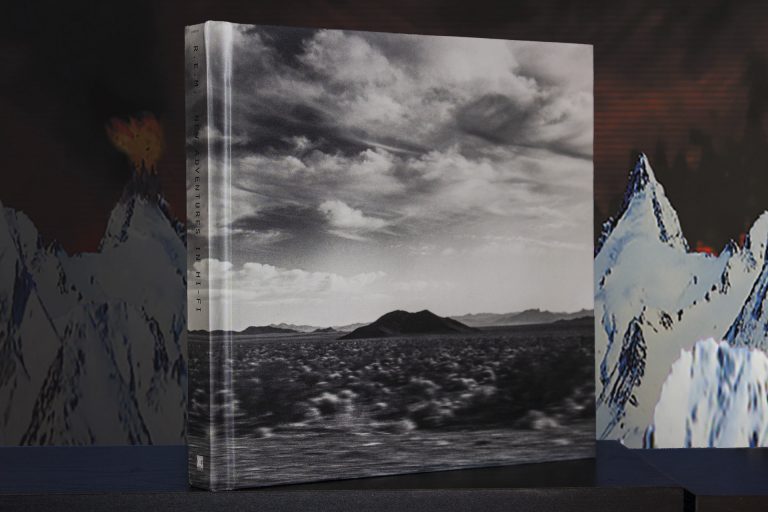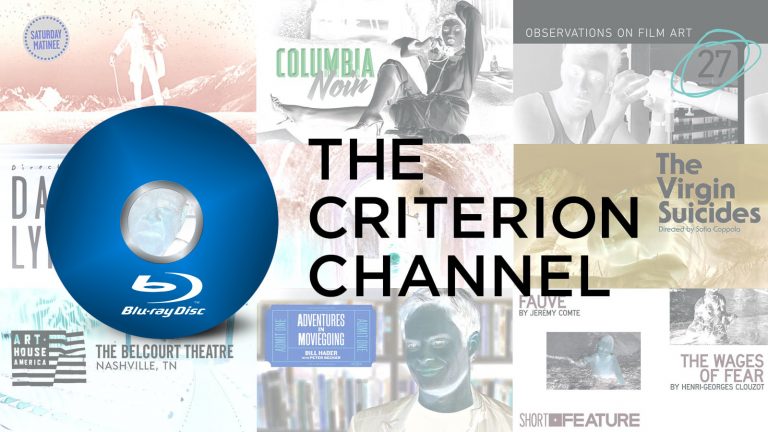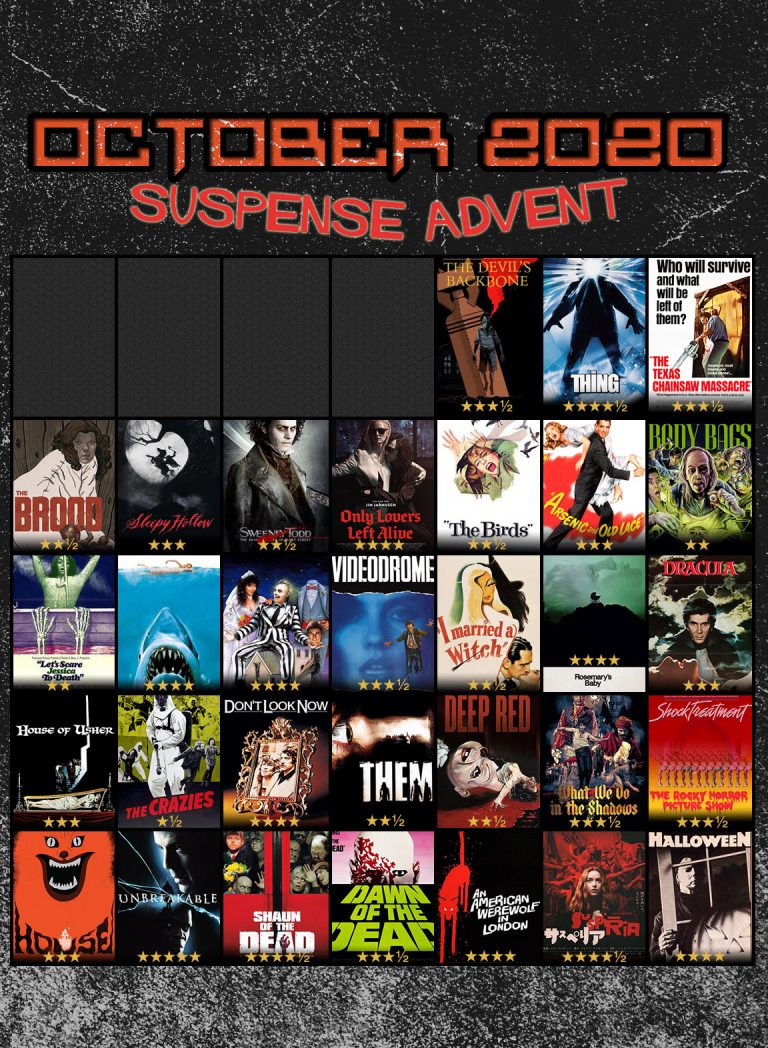
1 – In Which the Author Provides Autobiographical Context
These are the facts. As I write this, I’m turning 29 years old, after four episodes of “Twin Peaks: The Return” have aired. I have been preoccupied with “Twin Peaks” for 16 of those years. That means over half of my existence has been spent thinking about wind through Douglas Fir branches, the appreciation of coffee and donuts, backwards/forwards dialogue, red drapes, logs, cherry stems, cherry pies, huckleberry muffins, The Muffin, strobe lights, jazz music, and the blankness of farts. It involves purchasing three generations of home video media, a constant revisitation of just a little over 30 hours of visual/aural entertainment, bolstered by four official books, hours of original music, fan art and retrospective interviews and message board discussions.
Watching “Twin Peaks” for the first time at age 13 meant realizing that movies and TV have an author behind them, just like the names on the spines of books. In this case, the names were David Lynch and Mark Frost. I’ve since become a bit of an evangelist for the unfairly underplayed contributions of Frost to the series, but admittedly, the quest to seek out Lynch’s art in all its forms is a far more seductive one. I’ve seen and listened to everything that carries his directorial stamp with the sole exclusion of, ironically, his one attempt at a 4-quadrant crowd pleaser: Dune. Nothing else Lynch has created is exactly like “Twin Peaks,” but like Special Agent Chet Desmond in Fire Walk With Me, he has his own M.O. There are certain rhythms he sets, fetishes he indulges, feelings he pulls from the air.
The psychological effect of prolonged immersion in absurd fictional worlds has NOT lead to a lack of perspective. 16 years of Talmudic studying makes the flaws stand out in stark relief. As I watch more films, and as television is allowed to explore subtler avenues of character development and plotting, the total number of unimpeachable hours of “Twin Peaks” begins dwindling. To love something is to accept the full picture, and the show’s most ardent fans are also its harshest critics. A tautology emerges: the show is best when David is there; the show is bad when David is gone.
All of this is to say that I faced “The Return,” if not with perfect courage, then at least with a balanced mindset. My dual nature was in check. I hoped for the old familiar feelings, but I was ready to accept a new vision. By all accounts, these two consummate artists, Lynch/Frost, had gathered a dream team of like-minded craftsmen and craftswomen to create something bold and transcendent. The captains were steering the ship again; I was willing to sit back and go on a journey.
Before the first hour was over, the security of being in good hands was gone. By the credit roll at the end of hour 2, I felt fundamentally unmoored. Hour 3 and hour 4 flew further off the rails. I wasn’t fooling anyone: I was hurt, and I was hurt bad.

2 – The Most Beautiful Dream and the Most Terrible Nightmare All At Once
What was wrong? I’ll address that first, fully aware that it exists in the realm of subjective taste.
I was shocked at how amateurish so much of it felt. Rather than premium television or David Lynch’s best cinema, it brought to mind cheesy direct-to-video oddities from Neil Breen (peep the absurdly simple GUI on Bad Coop’s FBI hacking tablet), stilted acting showcases from Tommy Wiseau (“thanks, Tracy”), and the portentous tedium of student film horror. The billboard for the Rancho Rosa neighborhood glimpsed in episode 3 made me bark out a laugh, as the 2D graphic seemed cut-and-pasted from an old episode of “Tom Goes to the Mayor.”

I stared blankly during the stabs at absurdist comedy. This woman with her dog is so scatterbrained, she doesn’t know her address! Let’s watch her put her community theater patter skills to the test as she babbles to 911, practically enunciating the em-dashes in the script. Lucy and Andy are back, and they are complete slapstick caricatures, whose every confused phrase is spoken with more labored difficulty than the backwards Black Lodge dialogue.
In fact, virtually none of the actors come off well. Even the heightened soap performances that were the stock-in-trade of classic “Peaks” have a psychological weight compared to the struggles of even the most seasoned cast members to deliver these words. Naomi Watts should win an award for the sheer Olympian effort of trying to make her harried wife plausibly react to Coop’s dumbshow gawking.
My next question might be, “Why does it feel wrong?” The answers are contained in the most basic elements of filmmaking, and the way Lynch and his team inexplicably fumble them.
From the first shots, of Cooper and Not-The-Giant in a mysterious room, it looks cheap. The word “ersatz” floats through my mind again and again while watching the digital cinematography of the revival—an imitation, a degraded photocopy. I don’t know if most of the viewing audience notices, the way people with new LED televisions don’t understand why I’m squirming in my seat at the unnatural smoothing effect of the built-in “TruMotion” filter. But the look of the show immediately creates a distance between the material and myself.

It’s not even a digital versus celluloid thing. Nearly all of the most gorgeous, “cinematic-looking” shows on the air today, like “Better Call Saul” and “American Gods,” are shot with ultra-HD camera packages made by RED and Alexa, and the new “Twin Peaks” is no different. I’m not a professional cinematographer; and if I were, I would still stand in awe of director of photography Peter Deming’s work on Evil Dead II, Lost Highway, Mulholland Drive, and Cabin in the Woods. So I have a difficult time pointing to a specific lighting or lens choice that causes these episodes to fall into the Uncanny Lifetime Movie Valley.
I do, however, have a better grasp on analyzing shot composition and editing.
3 – The Fury of No Momentum
The second new scene in “Part 1” is Jacoby receiving his shipment of shovels at his trailer in the woods. We see the truck pull up, we see the truck back in, we see Jacoby exit his trailer and greet the driver, watch them unpack the boxes and make small talk and then say goodbye. The sequence is two full minutes, and unfolds in almost real time. Look, I’m okay with the mystery of the Jacoby subplot—I get the “all will be revealed in time” nature of the 18-hour movie format. But the presentational choices Lynch makes here are literally distancing. 
For instance, the super wide shots from far away, mostly focused on the actor’s backs, so that the action of unpacking is not “opened up” to camera. Then the shot with trees placed in the foreground, and the slight, unmotivated dolly back and forth. The fact that the small talk, bland as it is, is not even mic’d closely, so we strain to hear.

Lynch and series editor Duwayne Dunham cut between these two pieces of “coverage,” but not to compress time, or to offer us another perspective of the action taking place. What are we meant to feel? Uneasy? Comforted? Frustrated?
To adopt this same approach to composition and pacing in the very next sequence, as Sam Colby goes about his glass box photography business, seems like a very dry joke played on the audience.

Holding on shots or performances for longer than what seems natural has long been a Lynch trademark, but in the past, those extended moments created an interesting tension. You could sense the actors begin to get slightly restless, and it communicated a character’s own unease or internal thought process burbling under the surface. Think of Bill Pullman as Fred Madison in Lost Highway: the pained drags on the cigarette, the sweaty paranoia as the phone continues to ring in an empty house.

In this series, we don’t have Bill Pullman. We have Ben Rosenfield as Sam, presenting an utter blankness that would be chilling if there were any reason to suspect we’re meant to feel threatened by him. We have the same saggy editing rhythm applied across the board, including in dialogue scenes that are explicitly meant to be comedic. (Tighten the Wally Brando sequence to a quarter of its length, complete with Truman’s exasperated reaction shots, and an interminable bit of forced whimsy becomes as inspired as half the Internet believes it to be.) Horror becomes laughable; while jokes land with a thud, then drag themselves, bleeding, across the floor.
Take another scene from “Part 1.” The reunion of Ben and Jerry Horne seems funny on paper: Ben has seemingly put aside his philandering ways, while Jerry, ever the free spirit, has embraced Washington State’s marijuana legalization via a new venture. The characterizations ring true, the dialogue is arch, Jerry’s wardrobe is textbook Pacific Northwest hippie. So why does the scene feel like a total slog?
Let’s look at the coverage choices: cutting between very wide 2-shots. Along with the medium profile shot established as Ben talks to Beverly, we get to see three angles of Ben’s face. We see Jerry in ¾ profile most of the time, and also the back of his head. You could make the argument that keeping the shots wide accentuates the emotional distance between the two brothers, and that’s a valid choice to make.
But by presenting this interaction in such a flat, removed way, with sedentary blocking (Ben never moves from his desk), it reminds me that I am watching a camera record actors reading lines, on a set Lynch seems more enamored with than with his cast. And it sucks the zing right out. Imagine if the brie-and-butter sandwich scene from the original series was played solely in these shots, never moving in for Jerry’s coverage:


Lynch and Frost did not put a period on their writing partnership with Fire Walk With Me (Lynch flew solo, with help from series staff writer Robert Engles). Rather, their last collaboration was “On The Air,” a D.O.A. sitcom that was a whole microverse of absurd, pun loving, grandpa humor. Through this lens, we have a Rosetta Stone to comprehending the tonal whiplash of the new series. Take that 1992 pilot and add air between the lines until it inflates from 24 to 58 minutes (and reduce the jazzy score to just a few droning chords). The absurdity would still build, but at a pace usually reserved for nature documentaries.
In its initial run, “Twin Peaks” was praised for the way it balanced horror and melodrama with quirky humor. As Lynch and Frost stepped away from their duties as creative overseers during the back half of the Season 2, fans and critics noticed a distressing turn toward slapstick, self-conscious surrealism, and an overall watering-down of the primary cast’s strengths. Storylines from that era have very few defenders, and the creators are quick to disown them.
Now that they’re back at the helm, online defenses follow this narrative: Every creative choice is deliberate provocation. If the comedy doesn’t tickle you, you are reacting from a nostalgia-tinted misunderstanding of what “Twin Peaks” is. If you feel restless during the surrealistic passages, you must be unfamiliar with David Lynch’s aesthetic.
By this rationale, the writer of this essay, a devotee who has willingly watched a 30-minute video of Lynch building a lamp, becomes Roger Ebert reviewing Blue Velvet, a.k.a. “a critic who doesn’t GET it, man.”
As Gordon so succinctly put it: “WHAT THE HELL?”

Stray Thoughts
– I watched all four released parts a 2nd time before starting to write this. The response from critics and viewers has been so positive, that I was starting to feel a little nuts. Once I already knew what I was dealing with, a follow-up viewing made it easier to evaluate.
– I’m very conflicted about the cameo from a visibly ill Catherine Coulson. From a narrative standpoint, it honors her character by having her offer key guidance to help bring Cooper home. As an artist, Coulson shows bravery in her lack of vanity. But once again, Lynch’s presentation lets her down. It looks like what it is: a quickie video shoot to accommodate the schedule of the inevitable. It feels ghoulish.
– One of the most aesthetically suspect shots has to be Jade, nude, in the shower. The completely flat, unadorned composition is so crass and artless, and emblematic of the entire Z-movie cheepie vibe. Compare it to the relative tastefulness of even the most explicit scenes in Mulholland Dr, and the cognitive dissonance hits a new high score jackpot.
– Special Agent Dale Cooper is the de-facto universally beloved character of the series. Lynch and Frost know this, probably feel it themselves. He’s their ace in the hole. Cooper spends the first half of these episodes as a rational man navigating an absurd dimension, and the 2nd half as an absurd cipher navigating a linear universe. He’s half-baked Cooper. No wonder the tone feels off.
This brought back fond memories of “Mork & Mindy” pic.twitter.com/JrLjOU0CgH
— Paul F. Tompkins (@PFTompkins) May 29, 2017
– Finally, let me be totally clear: I am not trying to shame anyone for enjoying these episodes! I wouldn’t trade this renewed excitement in the world of “Twin Peaks” for anything. I’m not throwing a fit and refusing to keep watching, either– I’m curious to see where it goes, but I’m newly apprehensive about the journey.






